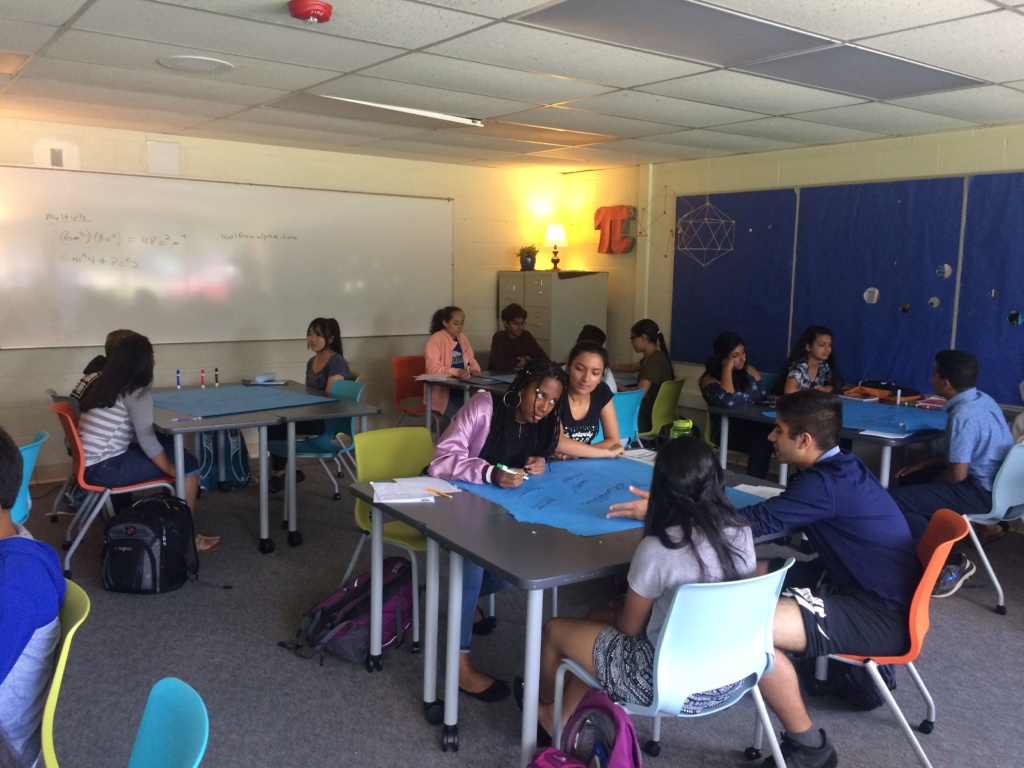
The Cultures of Thinking (CoT) framework was developed by the Project Zero team at Harvard University. The framework focuses on eight cultural forces that exist in classrooms: expectations, language, time, opportunities, interactions, environment, routines and modeling. These forces, according to Dr. Ron Ritchhart, the Principal Researcher for the CoT project, exist in every classroom, whether they are given attention or not. The idea is to properly leverage these forces so that classrooms become places where thinking, collaboration, independence and deep-learning rule and become common-place, rather than teacher-centred places that are ruled through stress compliance and work.
Harnessing meaningful opportunities is a crucial part to creating a Culture of Thinking in a classroom. As Ritchhart points out, “the opportunities that teachers create are the prime vehicles for propelling learning in classrooms” (p. 144). If planned properly, opportunities can be engaging, thought-provoking, and fun for students. This article will focus on the application of the forces of opportunities in the secondary classroom. Although many of the examples will focus on maths and science, the core principles that are drawn from these examples can be applied to any classroom.
In past years, when covering the concept of unit vectors in IB DP Math SL, the lesson would go something like this:
- Tell the students that a unit vector is a vector of length one, and demonstrate the proper notation.
- Show them the procedure, or ‘recipe’ to find a unit vector.
- Have them work independently to find unit vectors given several vectors.
- Show them how to use unit vectors to create parallel vectors that have the same directions, but different lengths.
- Show the students the tie-in to motion of objects that have a constant velocity.
When covering voltaic cells in IB DP Chemistry 1, the lesson would go as follows:
- Lecture about the parts of the voltaic cell, how to construct one, and give examples of voltaic cells used in their daily life.
- Give a lab hand-out and go over the steps to construct a voltaic cell.
- Have students perform the lab and compare their results to theoretical results.
- Have students practice drawing voltaic cells, including labeling the parts of cells and predicting electron flow.
The maths lesson and the chemistry lessons both went well in terms of test performance. The students could do the maths problems as long as they were scripted exactly like they had been in class, and chemistry students were able to successfully construct voltaic cells.
As we began to have discussions about the CoT framework, we really started to think about these lessons and the impact that they had on student thinking. As we reflected on our teaching, we pondered the questions in Table 1 and realised that with a bit more planning, we could provide richer opportunities that provoked deeper thinking. As far as the opportunities, the students had to repeat back very cookbook-like tasks that they completed exactly the way they were shown, as though we were the sages who knew the content better than they did. The tie-in to real life applications in particle motion and batteries was prescribed and told to them. Their thinking was not stretched or pushed, and even though “it is what students are actually doing mentally that matters” (Ritchhart, p. 144), the students were mentally just doing surface-level learning. They demonstrated an ability to perform these skills, but only in familiar situations – and they were only assessed in familiar situations.
Table 1: Key questions related to the Opportunities force
| Opportunities key questions: 1. How did I ensure that rich thinking opportunities are woven into the fabric of my teaching and that students aren’t just engaged in work or activity? 2. How did I provide students with opportunities to direct their own learning and become independent learners? 3. How did I take pains to select content and stimuli for class consideration in order to provoke thinking? These questions are adapted from Creating Cultures of Thinking: The 8 Forces We Must Master to Truly Transform Our Schools, pp. 324-325 |